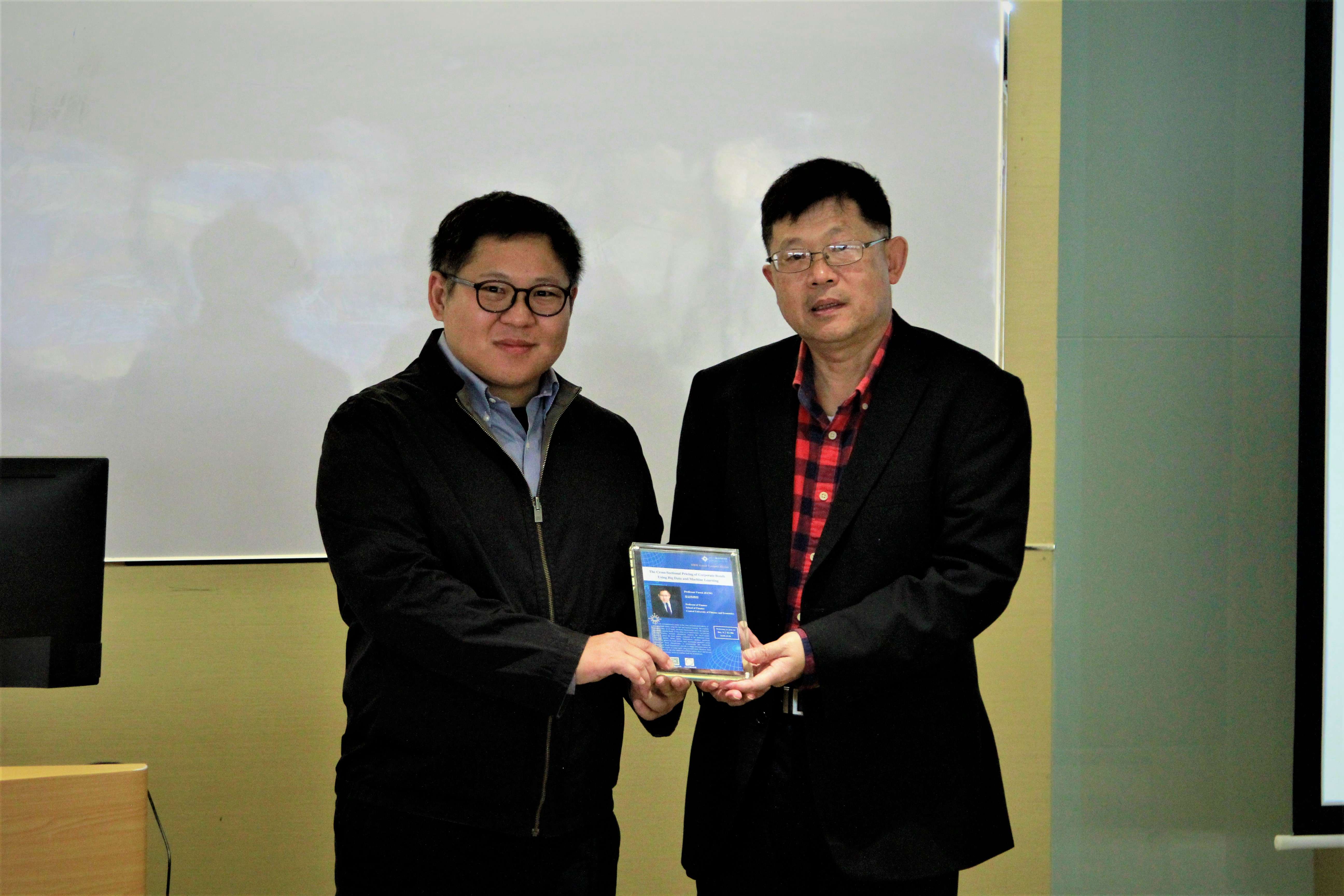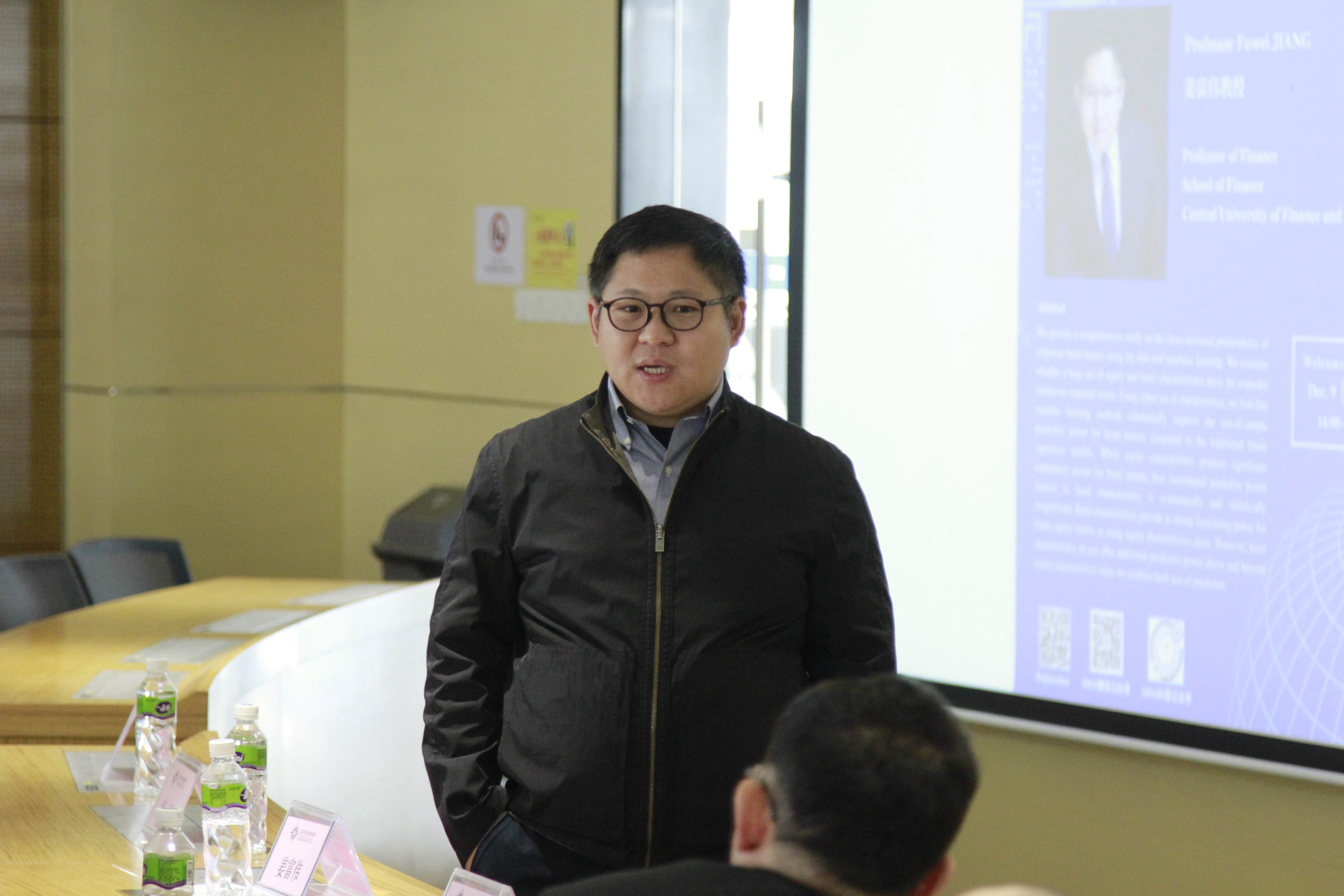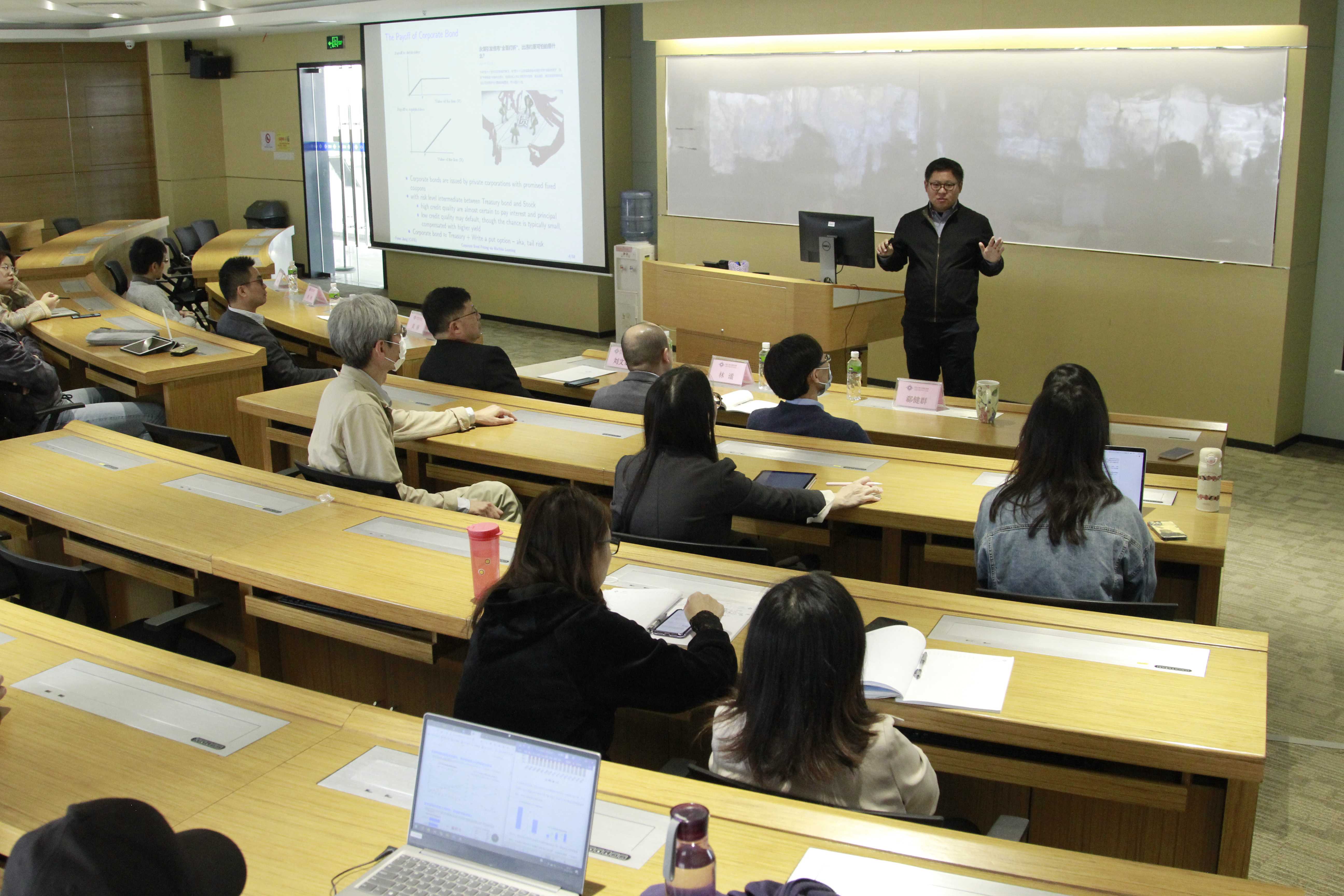
On 9 December, invited by the Division of Business and Management, Professor Fuwei Jiang, Professor of Finance at School of Finance, Central University of Finance and Economics, delivered a lecture titled “The Cross-Sectional Pricing of Corporate Bonds Using Big Data and Machine Learning”.
Professor Jiang received his Ph.D. in Finance from Lee Kong Chian School of Business, Singapore Management University. His main research interests are Empirical Asset Pricing, Return Predictability, Behavioral Finance, Machine Learning, Textual Analysis. Professor Jiang has published more than 30 papers in top financial journals. He also took on several journal reviewers.
Before the lecture, Professor Wenbin Liu, Dean of DBM, gave an opening remarks and warm welcome to the guest.

Prof Wenbin Liu (right) presents a souvenir to Prof Fuwei Jiang
In this lecture, Professor Jiang shared his new research on the cross-sectional predictability of corporate bond returns using big data and machine learning. Though the coupon rates are fixed, there still exists the default risk and credibility problem. Hence, studying the cross-sectional pricing of corporate bonds is necessary and meaningful as it can address the downside risk of corporate bonds. By using big data and machine learning, the out-of-sample predictive power for bond return is improved compared with using traditional liner regression models such as OLS model.

The effectiveness of models such as OLS, LASSO, FFN and LSTM are compared in this study. More than 130 stock characteristics and bond characteristics are used in the models and it significantly contributed to the existing literatures. Campbell - Shiller decomposition method which includes cash flow and discount risk news is used to measure the stock returns.
This study proves that machine learning portfolios generate economically and statistically significant return spreads, much higher than that of OLS. In addition, it suggests that bond characteristics provide as strong forecasting power for future bond returns while using equity characteristics alone do not offer additional predictive power above and beyond bond characteristics.

At the end of the lecture, audience raised queries in the question and answer section.